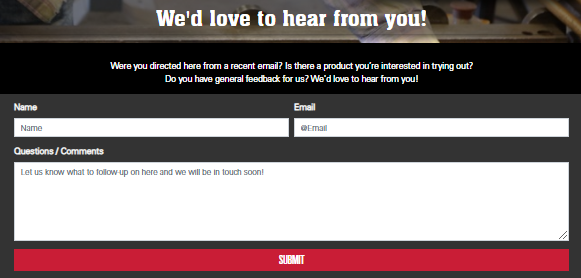29 Aug 08/29/2021
Getting to Know the World of Surveying and Surveyors Safety Vests
The planning and execution of most construction projects, such as road construction, rely on the profession of surveying. This professional discipline determines three-dimensional positions of points, plotting the distances and angles between each point. These calculations are necessary for establishing maps, land boundaries, property value, and the property elements necessary before any structure can be constructed.
Surveying is a practice that dates back to ancient times, around 1400 BC, when the Egyptians surveyed parcels of land to determine appropriate taxation value. The concept of surveying then spread to Mesopotamia, China, Rome, and Greece. Each new civilization that embraced surveying added its innovative techniques, improving the overall process. The Chinese added the magnetic compass, the Romans added the groma, and the Greeks introduced the diopter. Now, in the 21st century, surveying has spread worldwide, and technologies such as global positioning and computer software are transforming the surveyor's role.
.png?h=355.5&w=681.25&hash=BA46BE5736D7CD3D063B8DB3332C3519)
Use our left-hand navigation bar to jump directly to any of the above vests.
Wherever industries such as construction, mining, oil and gas extraction, or railroads exist, surveyors are there setting boundaries for others to follow. This article will cover the different types of surveyors, what they do, the types of equipment they use, and the PPE they require to perform their jobs safely.
Surveyor Definitions

Before we jump into detailing the specific types of surveyors, let's first answer some broad questions around this profession.
What is a surveyor?

According to the Cambridge dictionary, a surveyor measures and records the precise details of land and structures.They determine the size, contour, and shape of the Earth's surface, then provide this data to engineers and architects. For existing structures, surveyors may also determine if any problems exist as a result of the land formation on which a building is located since the ground can shift and move over time.
According to the Bureau of Labor Statistics (BLS), surveyors held 48,000 jobs in 2019. And, the industry shows a 2% continued overall growth — impressive for an occupation that has been around for thousands of years. The largest employers of surveyors are:
- 69% — Architectural and Engineering
- 10% — Government
- 7% — Construction
- 5% — Self-Employed Jobs
- 2% — Mining and Petroleum Extraction
As you can see from the above data, construction surveyors make up the bulk of all surveyors. Across the other areas, you'll find forensic surveyors who examine accident scenes, geodetic surveyors who survey large land regions from aerial positions, and mine surveyors who examine material volume in the land. Those involved in mining operations also examine foundational structures such as tunnel walls and ceilings.
What does a surveyor do?

Basically speaking, surveyors take measurements of the land. However, there's more to the job. Below is a list of some of the other activities performed by land surveyors. Here is a look at what they do:
- Analyze geographic data
- Create and prepare maps
- Conduct surveys: topographic, boundary, and mortgage
- Use engineering instruments to establish fixed points
- Calculate terrain characteristics, such as height
- Record elevation and dimension
Two core areas require surveyors' services: land and property, and boats. While you might have expected the land and property surveyor type, boat surveyors may come as a bit of a surprise. Read more about each below.
Land and Property Surveyors

Even when there are no construction plans in place, property owners need to know the legal boundaries of their land. Land surveys also help describe what the land looks like and its significant features. Here are some common reasons land is surveyed:
- Buying and selling land
- Separating land into smaller plots
- Installing fences, landscaping, and land improvements
- Providing legal proof of property line measurements
- Ensuring neighboring buildings don't infringe on identified property
- Determining precise locations of buildings and roadways
- Assessing floodplain areas
- Identifying easements and shared access points of a property
- Identifying potential hazards, such as land erosion and landslide dangers
A land surveyor is also commonly referred to as a property surveyor. However, a land survey will only provide details surrounding the land itself. A building survey will need to be requested for those who need more information about a building or structure on a property. Building surveys plot floor plans, structural plans, and model planned representations of buildings.
Boat and Marine Surveyors

The same concerns about land boundaries and structure soundness apply to the water and watercraft. Just as someone would hire a surveyor to complete a report on the boundaries of a piece of land or the condition of a home, potential boat owners and mariners require the same type of assessment. Surveying water features, including harbors, rivers, and shorelines, these professionals are either boat or marine surveyors. They can also survey boats and marine vessels to determine seaworthiness and safety.
Marine surveyors inspect maritime vessels to ensure the boat or watercraft is seaworthy. They will perform many of the same functions as a property surveyor, with some added responsibilities. Here are some of the added responsibilities of marine surveys:
- Measuring ships
- Performing annual surveys and safety examinations
- Inspecting ships for classification status
- Assessing the hull's soundness
- Checking engine performance
- Surveying the rig and mast's integrity
The actions in this list are all boat-related. Are there any verbs that could be added that address the measurement or mapping of water features like the ones mentioned earlier (harbors, rivers, shorelines, etc.)?
Surveyor Tools

What tools does a surveyor use? Besides needing a tool belt to safely carry analog and digital tape measures and other equipment to work sites, surveyors use specialized instruments and software to perform their duties. Most distance-measuring instruments screw onto a tripod for use. Land is also surveyed using 3D scanners and aerial imagery. Other components include drafting tools such as CAD software, GPS/GNSS, levels, and rods.

The most common survey equipment includes the following:
- Axes/Machetes – used to clear away thick brush.

- Flagging Tape/Marking Paint – for helping to identify and mark underground cables and pipes
- Gammon Reel – immediately sets the plumb bob's height without having to adjust the cord length.
- Hand Level – helps determine a rough level line of sight for grading.
- Hubs and Nails – help quickly locate marked areas when using a magnetic locator

- Measuring Wheel – measures distances across all types of surfaces

- Plumb Bob – used for a vertical reference point.

- Prism Pole – a pole used in conjunction with a survey level to measure the elevation of existing ground or grade
- Surveying Prism – calculates the change in the position of a target, increasing the surveyor's accuracy.

- Tape Meter – used to take precise measurements.

- Theodolite – measures both horizontal and vertical angles between visible points.

- Tool Belt – helps keep all the surveyor's tools nearby.

- Transit Level – finds a level line across a lengthy distance.
Surveyors use a variety of other tools depending on the job and conditions. We encourage you to check out www.enginnersupply.com for a comprehensive look at all the tools this occupation requires. With all of the necessary tools, surveyors need safe and protected places to store them. The easiest and most convenient choice is a safety vest featuring lots of pockets. Let's dig a little more into this topic.
Class 3 and Class 3 Surveyor Vests

Surveying professionals work outside in all types of weather, stand for lengthy periods, carry heavy equipment, and walk miles while performing their job. In addition to all these challenges, they often perform their duties around fast-moving vehicles, which means they face the hazard of not being seen by drivers.
A surveyor's job requires the highest-quality tools and equipment, extending to the personal protective equipment (PPE) they must wear. Hi-vis safety vests are the most common, everyday type of PPE surveyors require. We stock both Class 2 and Class 3 styles, with Class 3 offering enhanced visibility due to reflectivity being extended onto the arms. Let's take a look at the best surveyor vests in our lineup.
SURVL
The SURVL lime surveyor hi-vis vest features 3-inch orange silver reflective stripes. It's also equipped with a sturdy zipper front, six total pockets, and a mic-tab holder on the left chest. We stock an orange version, too, part number SURVO, shown below.
SURVCS2O
The SURVCS2O is dual-certified, meaning it meets or exceeds both ANSI/ISEA Class 2 and Canadian CSA Z96 Class 2 requirements. This mesh safety vest features black side panels, reflective trim materials, 3-inch lime/silver reflective stripes, and a reinforced zipper front. It also comes with six total compartments: 4 outer and 2 inner pockets. Lastly, a clear badge holder and mic-tab holder set this vest apart from other premium safety vests.
SURVCL2L
The SURVCL2L is an ANSI/ISEA Class 2 mesh safety vest made of fluorescent lime polyester with black side panels. It features six total pockets, two mic-tab holders, and a clear badge holder. It is also trimmed with reflective material to help keep you seen!

SURVCL2L is a style professional surveyors vest.
PSURVCL2LS
The PSURVCL2LS comes equipped with patent-pending 2-inch silver ForceFlex® reflective material centered on 3-inch orange contrasting trim. Out of all tape options, it provides the best flexibility, and it's stylish, too! This vest also features a heavy-duty solid shaded material on the bottom front to help hide soiling.
If you need a surveyor vest with pockets, you'll find ten of them on this one!
VSURVMLB
The VSURVMLB Class 2 safety vest is loaded with features! 9 total pockets, a back pocket, sturdy binding, and reinforced snaps are some of the numerous additions incorporated into this high-quality vest. It's specifically designed for individuals wanting premium protection at an affordable cost.

VSURVMLB is known as our surveyors vest with back pocket.
SURVCL3L
When being seeing is an absolute must for a surveyor, the SURVCL3L is the way to go. It has a Class 3 rating, which means you'll stand out better along dangerous roadways. You can tell where the increased visibility comes from, as Class 3 vests have reflective stripes on the arms in addition to those around the torso. This vest is also engineered with a breakaway design, meaning it will not get entangled in any moving equipment. Lastly, it's equipped with four total pockets: two outer and two inners. SURVCL3O is the orange version and is shown below.
To view all of our safety vests, including our FR vests, check out our hi-vis safety vest online catalog.
Common Questions

How much do surveyors make?
- According to the BLS, the median pay for surveyors in 2020 was $31.54 per hour or $65,590 per year.
How to become a land surveyor?
- To become a land surveyor, you must first earn a bachelor's degree in a closely related field such as civil engineering or forestry. Land surveyors must be licensed before they can certify legal documents and provide surveying services to the public. Some schools offer bachelor's degree programs specifically designed for licensed surveyors. Licensing requirements in most states include four years of work experience and training under a licensed surveyor after obtaining a bachelor's degree.
What is a quantity surveyor?
- A quantity surveyor (QS) works in the construction industry and manages a construction project's contractual and financial side. They make sure projects are completed within a projected budget and help with the valuation of construction work, bidding, and billing.
MCR Safety's Top-Rated Professional Vests

Surveyors are an integral part of numerous industries. Because they primarily work in the field, they must be vigilant about protecting themselves from on-the-job hazards. Our goal in this article was to spotlight this crucial occupation and highlight the highest-quality safety vests available for surveyors of all types.
We welcome any comments, feedback, or suggestions for how we can best protect people at work.
For over 45 years, MCR Safety has proven to be a world leader in gloves, glasses, and garments. Whether it's surveying for the next town hall or superhighway, building and repairing infrastructure, or at a construction site, we are there providing solutions to workplace hazards. It's all part of our commitment to protect people.

No matter your industry, we have the personal protective equipment you need.
Learn more about MCR Safety by checking out our most recent video. For more information, browse our website, request a catalog, find a distributor, or give us a call at 800-955-6887.
About the Author
Latest Articles














